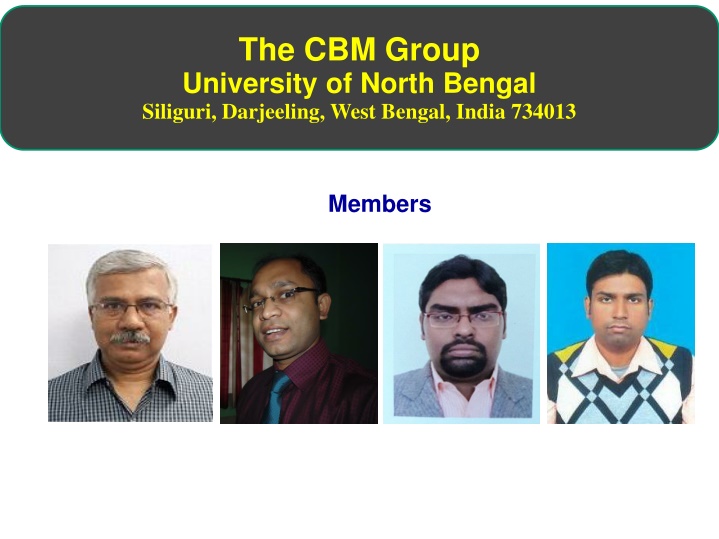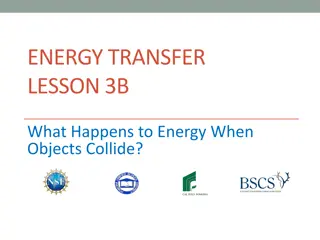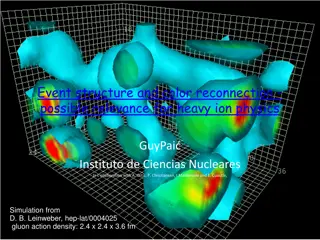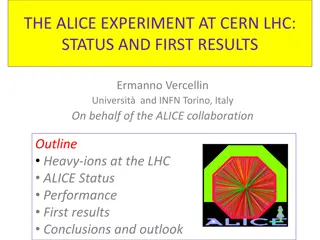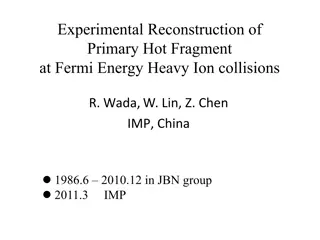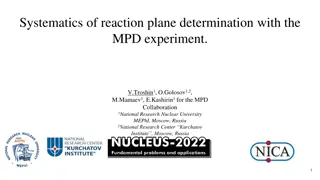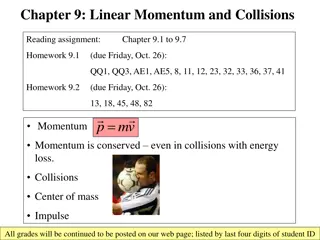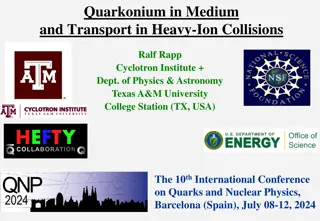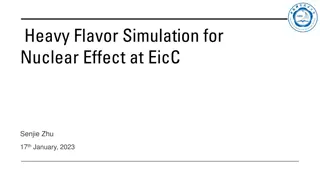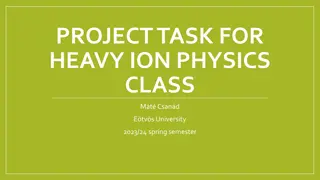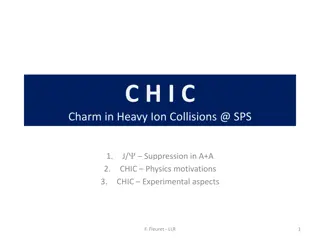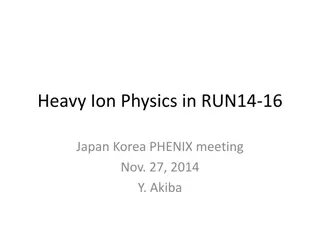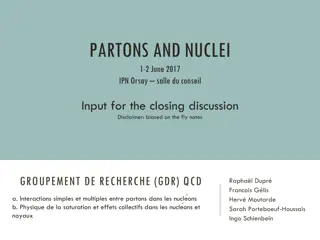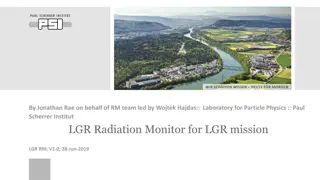Study on Collective Flow and Participant Eccentricity in High-energy Heavy-ion Collisions
Explore the research on collective behavior, eccentricity, and flow of final state particles in high-energy heavy-ion collisions. Learn about the measurement of Fourier coefficients, azimuthal angles, and spatial anisotropy, as well as the analysis of system size dependence and radial flow in various collision scenarios.
Download Presentation

Please find below an Image/Link to download the presentation.
The content on the website is provided AS IS for your information and personal use only. It may not be sold, licensed, or shared on other websites without obtaining consent from the author.If you encounter any issues during the download, it is possible that the publisher has removed the file from their server.
You are allowed to download the files provided on this website for personal or commercial use, subject to the condition that they are used lawfully. All files are the property of their respective owners.
The content on the website is provided AS IS for your information and personal use only. It may not be sold, licensed, or shared on other websites without obtaining consent from the author.
E N D
Presentation Transcript
The CBM Group University of North Bengal Siliguri, Darjeeling, West Bengal, India 734013 Members (Research Scholar) h Scholar) AA
COLLECTIVE FLOW AT FAIR ENERGY Soumya Sarkar SILIGURI COLLEGE
COLLECTIVE FLOW Collective behaviour or flow of final state particles produced in high-energy heavy-ion collision is measured in terms of the nth Fourier coefficient (vn ) of the azimuthal angles measured with respect to the reaction plane of individual collisions. The 2nd coefficient v2 characterises the elliptic flow of particles. Corresponding initial spatial anisotropy of the overlapping zone is quantified by the eccentricity : References: J.Y.Ollitrault, Phys. Rev. D 46, 229 (1992) S. A. Voloshin et.al. arXiv:0809.2949 [nucl-ex]
INTRODUCTION TO PARTICIPANT ECCENTRICITY Two collisions are never identical. In the figure we show three collisions at same impact parameter. Fluctuations in the Initial spatial asymmetry leads to event by event fluctuation in anisotropic flow One should define the eccentricity of initial spatial anisotropy in a proper way to take care of the event by event fluctuations. Therefore, the eccentricity has to be redefined as:
ECCENTRICITY (STANDARD) ECCENTRICITY (PARTICIPANT) Courtesy: PHOBOS Collaboration
PARTICIPANT ECCENTRICITY AND ELLIPTIC FLOW B. Alver et.al. Phys. Rev. C 81, 054905 (2010)
PARTICIPANT TRIANGULARITY AND TRIANGULAR FLOW B. Alver et.al. Phys. Rev. C 81, 054905 (2010)
OUR ANALYSIS SECTION I : System size dependence of elliptic and triangular flow. -> Model : AMPT (String Melting) -> Systems : (a) Au + Au ( 1 million events) (b) In + In (2 million events) (c) Ni + Ni (3 million events) (d) Si + Si (7.5 million events) ->Energy : 30A GeV (E_lab) SECTION II : Radial Flow -> System : Au + Au (1 million events) -> Energy : 10A GeV and 40A GeV (E_lab)
FLUCTUATIONS IN ECCENTRICITY AND TRIANGULARITY R. S. Bhalerao et al. Phys. Rev. C 84, 054901, (2011)
CENTRALITY DEPENDENCE OF ELLIPTIC FLOW B. Alver et al. [PHOBOS Collaboration], Phys. Rev. Lett 98, 242302 (2007)
CENTRALITY DEPENDENCE OF ELLIPTIC FLOW S. A. Voloshin and A. M. Poskanzer, Phys. Lett. B 474, 27 (2000)
ELLIPTIC FLOW DISTRIBUTION C. Gale et al. Phys. Rev. Lett. 110, 012302 (2013). 35 40 3 35 40 %
TRIANGULAR FLOW DISTRIBUTION C. Gale et al. Phys. Rev. Lett. 110, 012302 (2013) 35 40 %
RADIAL FLOW Transverse (radial) velocity : Total radial velocity : Mean transverse velocity : ( scaling out multiplicity effects)
S. Sarkar, P. Mali and A. Mukhopadhyay, Phys. Rev. C 95, 014908 (2017)
CONCLUSIONS 1. We have investigated the system size dependence of elliptic and triangular flow at Elab = 30A GeV over a wide range from Si + Si to Au + Au systems and our results are found to be consistent with those from other experiments. 2. Eccentricity and its fluctuations plays an important role particularly in smaller systems like Si + Si and Ni + Ni. 3. Triangularity and triangular flow is nearly independent of the system size. 4. Investigations on radial flow show a small but finite anisotropy in transverse velocity even after scaling out the multiplicity effects. 5. Species-wise investigations of radial flow is on-going and would be reported soon. 6. We also intend to explore the collective effects in asymmetric heavy ion collisions in our future analyses. THANK YOU
